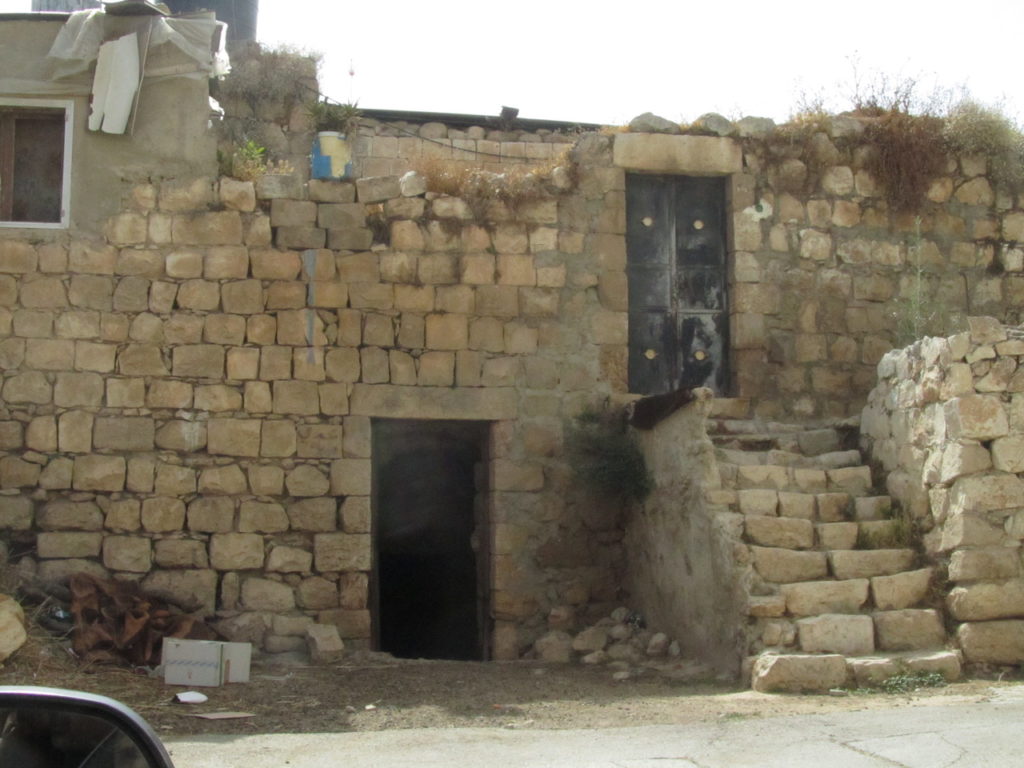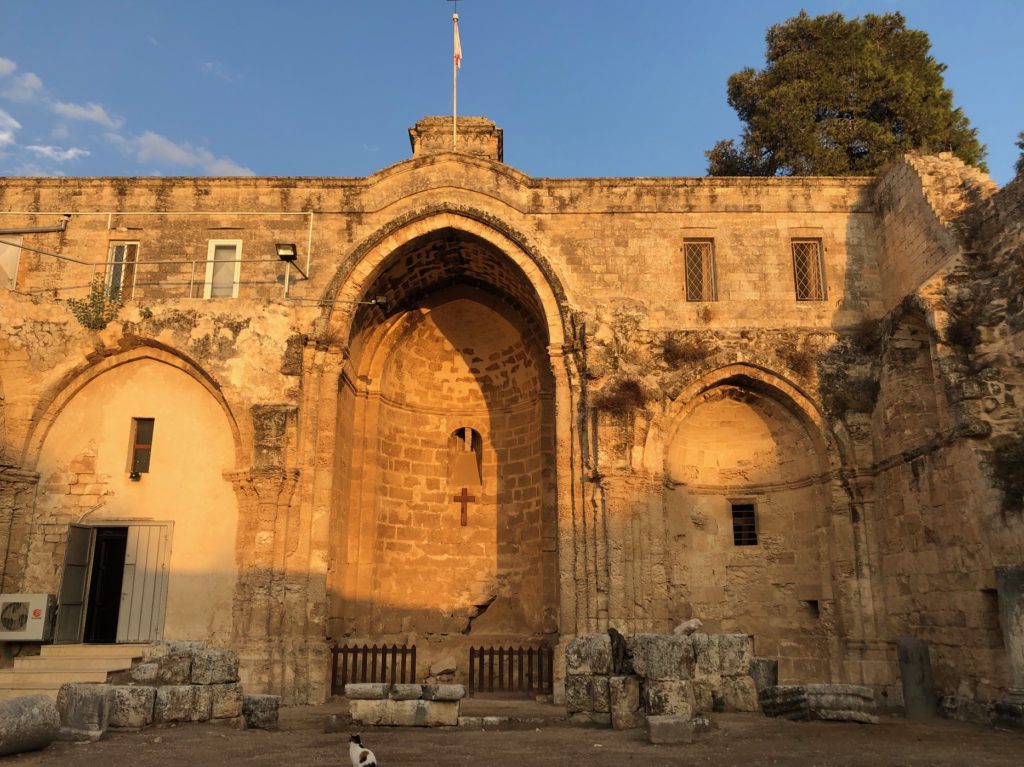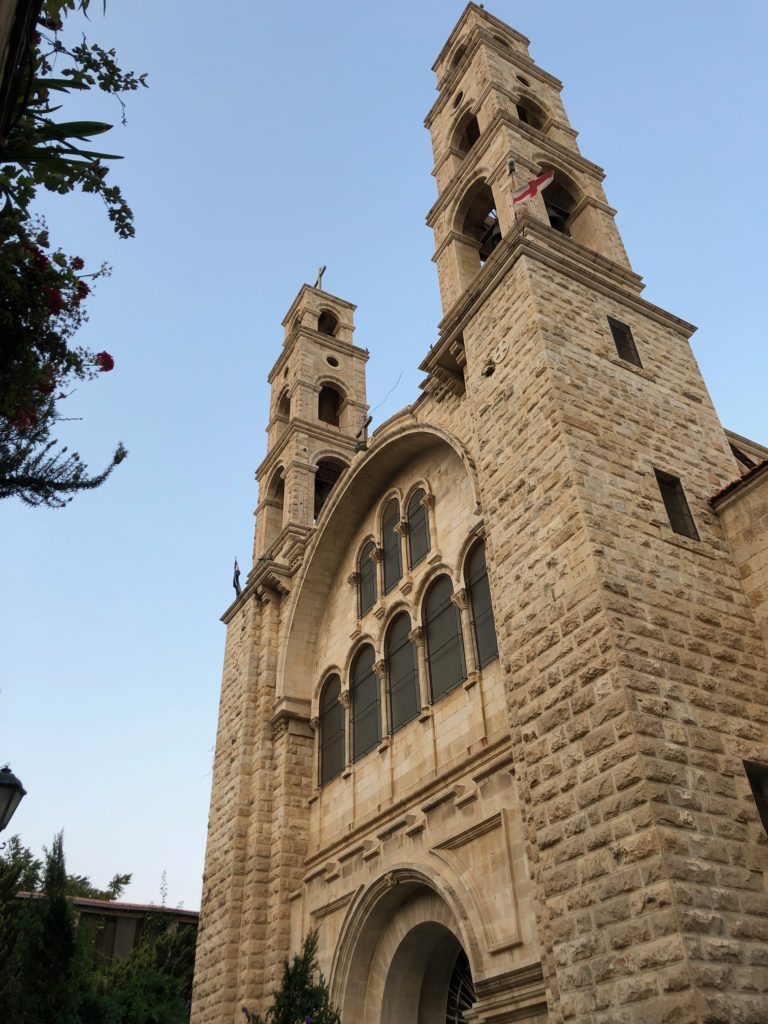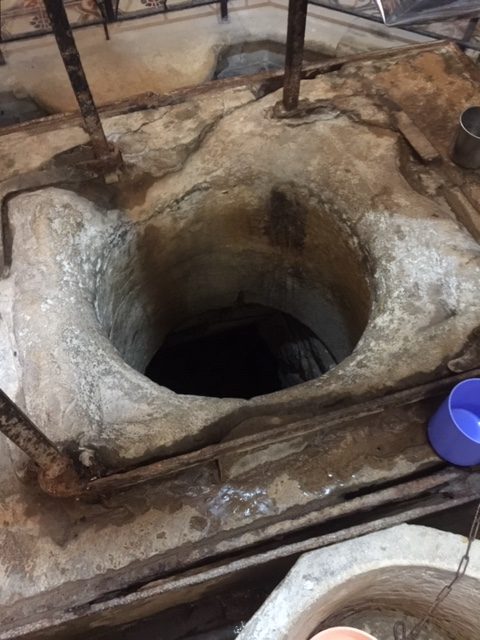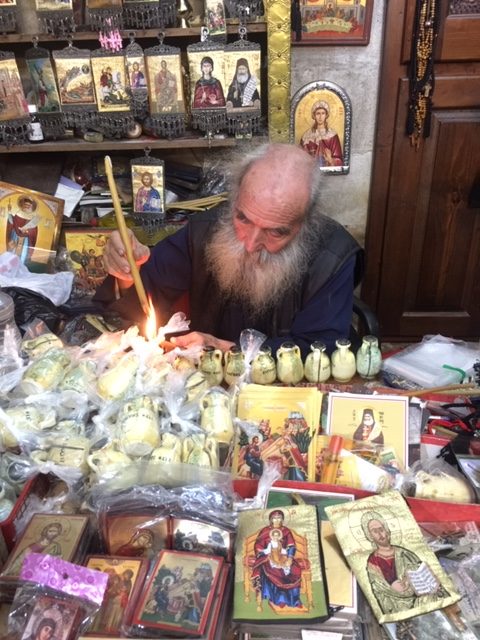By Tim and Lisa Otterbacher
At the request of Sandy we’ll be writing our blog as an official incident report.
The day was predicted as a day with rain, but instead we were blessed with yet another day of beautiful sunshine and blue sky.
7:45am: The morning started with Dave Gamble’s translation of an important notice noted on his guesthouse bathroom wall: “Gentleman do not place your butts or dentures in the toilet.” Though not confirmed, we went with his interpretation of the language. (Note from the editor: it’s a sign in Italian asking for placement of waste paper in the garbage can.)
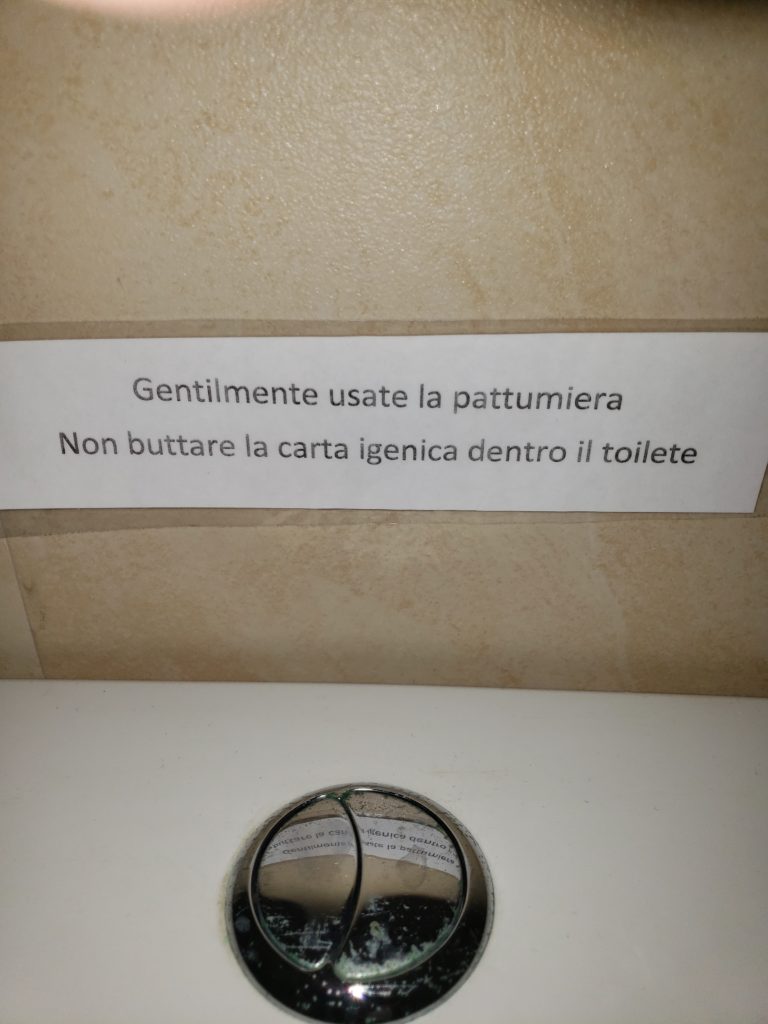
9:45am: Departed to the destroyed village of Bir’am. This is a small town to the North of Ibillin and the original home to Father Abuna Chacour. We met with our tour guide, Nahida Zahrah, who is native to the area and is the place where her father had a home. Bir’am is in a high part of the country about 2 miles south of the boarder with Lebanon. This village was flooded with soldiers in 1948 who told the story to the approximately 1000 villagers that they were there to protect the village from attack. The all Christian village was happy that the soldiers were there to protect them and even threw them a party. Eventually the soldiers told the villagers they were in danger of being attacked and that the villagers should leave the town. They were told they should flee to nearby Jish but the villagers were reluctant and hid in caves and the wilderness just outside town. Two weeks later they returned to their Village of Bir’am and found the houses broken into and the all the residents forbidden to return home. Over several years the villagers petitioned to have their village back which had been taken from them. This was denied. Finally in 1953 the military bombed and destroyed the village. In 1967 the villagers were able to establish a cemetery which they have been using to bury their relatives. We toured the cemetery and saw the location of Father Chacour’s family’s tomb.
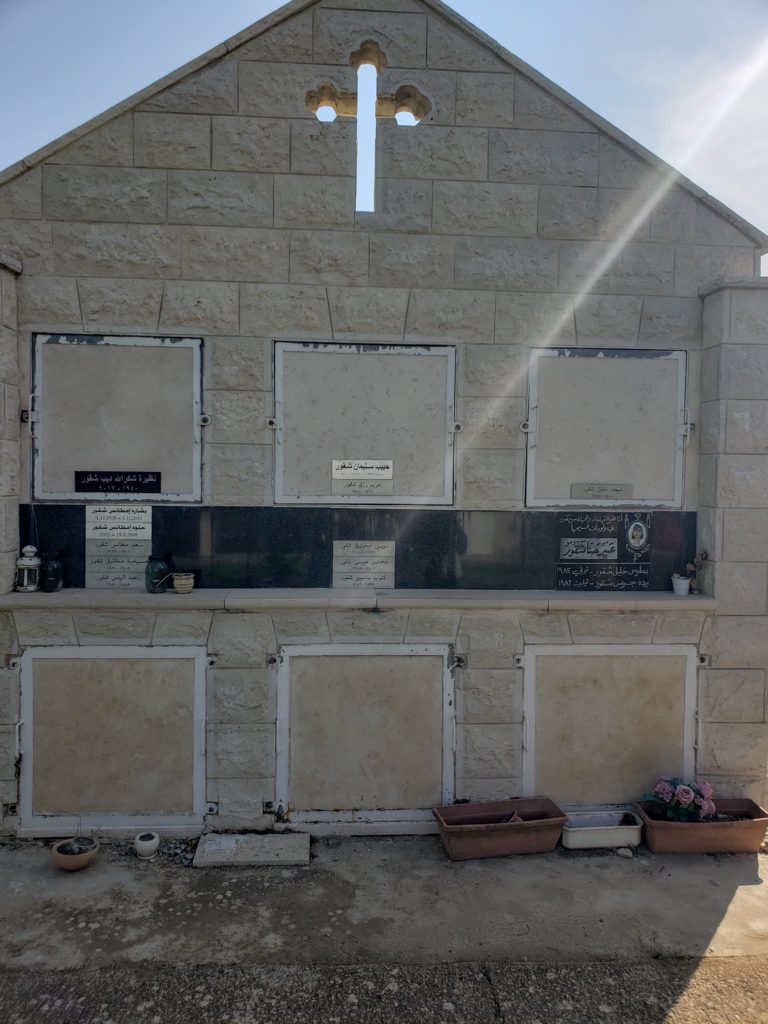
We also toured the destroyed village which is now an Israeli National Park. The only building that the military did not destroy was the two churches in the town. One of the churches in the village is claimed by Israel to be a reconstructed synagogue, but in viewing it that appears doubtful. We viewed the other Church and the home of Father Chacour and also the home of our tour guides father.
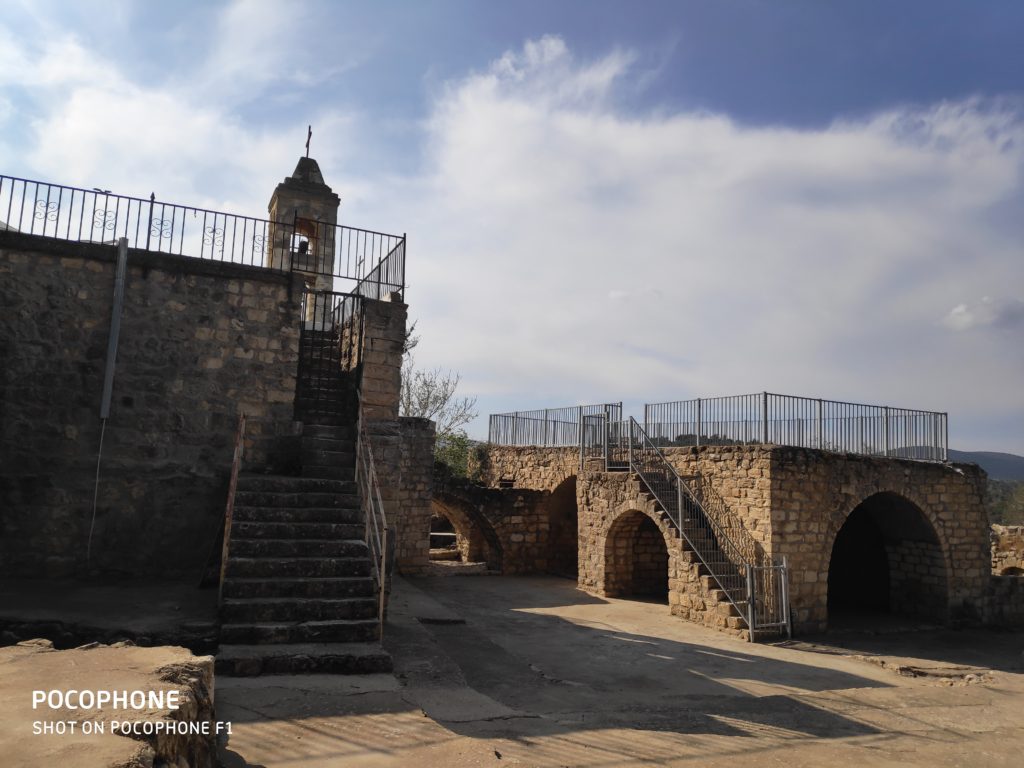
12:30pm: Boat ride on the Sea of Galilee. We arrived in Nof Ginosar at the Sea of Gallilee. We walked down to the sea and boarded two wooden hulled boats that seemed to look very similar to the ones that would be used around Jesus’ time. We were told by our two captains that the boats we were boarding were just a little wider and had a squared off Stearn instead of a pointed stern as the ones from the 1st century had. We headed out on 2 -12 passenger boats which were tied together.
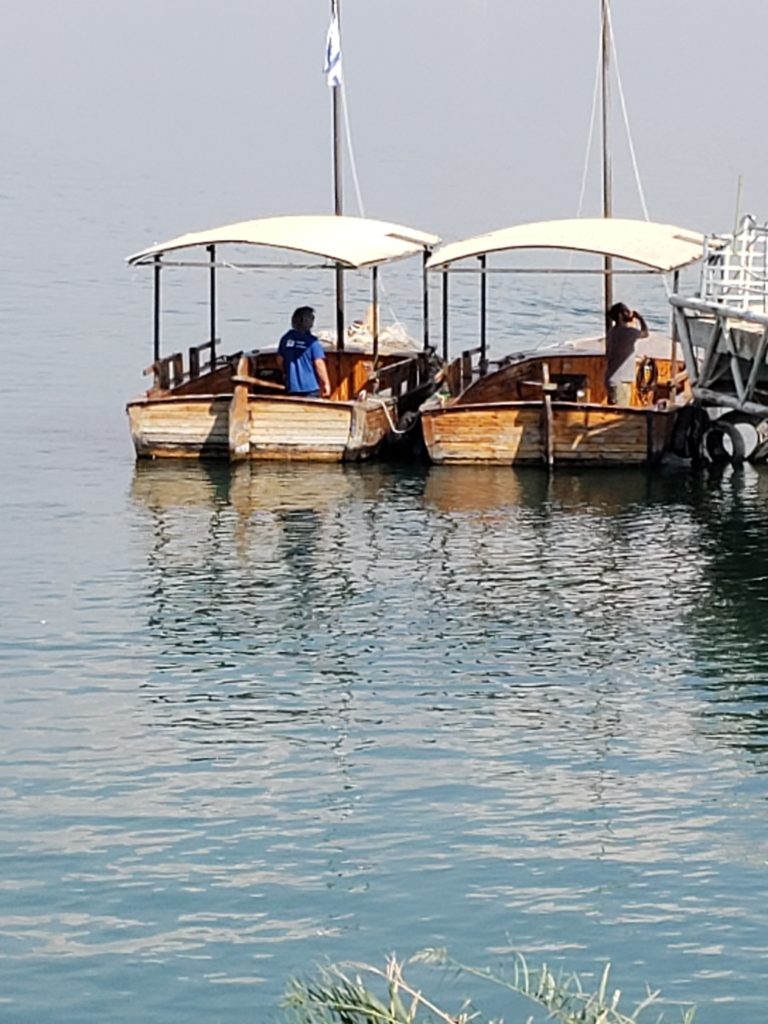
We read from Matthew chapter 8 while on the water, as well as other gospels to refresh our understanding of the calming of the seas and when Jesus encouraged Peter to walk on water during the storm. Our tour guide also casted a net from each side of the boat into the sea, sadly neither cast netted any fish. We were all allowed to put our feet into the sea off the side of the boat. We were also reminded that in the area of Galilee, Jesus performed 36 of his over 40 miracles. This cruise was a definite highlight for us.
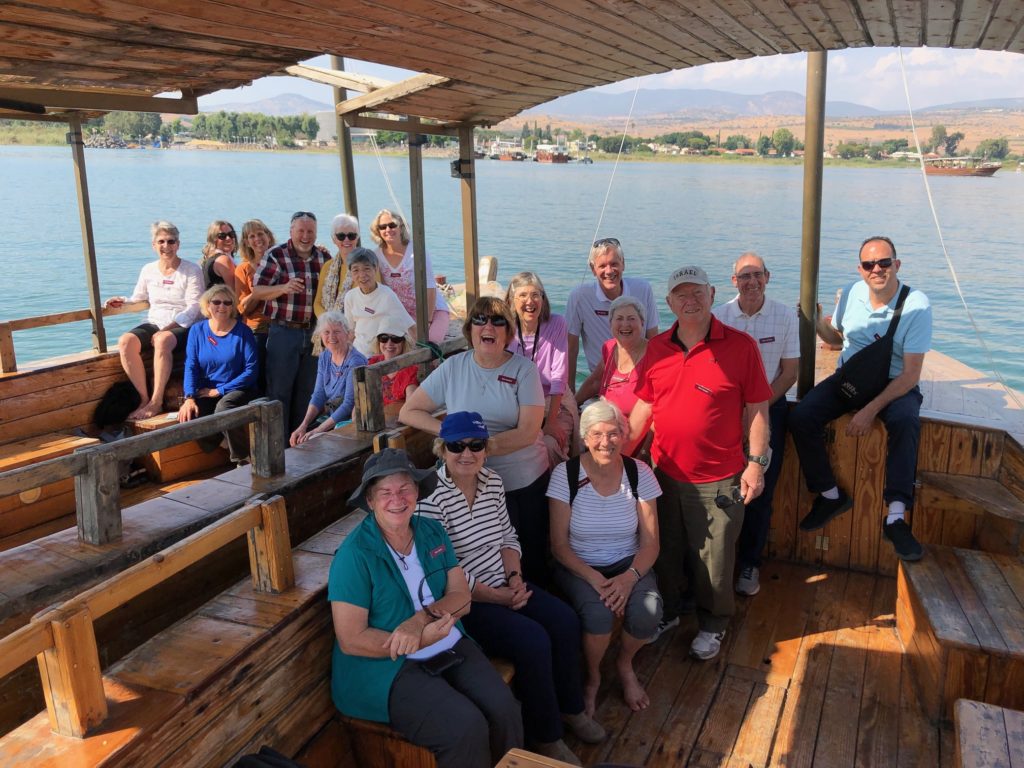
2:45pm: The time was short, yet powerful as we visited the Mount of Beatitudes where Jesus shared his Sermon on the Mount, The Beatitudes, at the start of one of his first sermons. The Church honoring this sermon is in the shape of an octagon that shares the Eight Beatitudes in the windows above the alter. The Mosaic tiles nestled into the floor represents the seven sacraments.The church was built in 1936.
3:15pm: Tabgha; the Church of Multiplication of the Loaves and Fishes. This location is where Jesus fed a crowd of over 5,000 believers with a young boy’s 5 loaves of bread and 2 fish. When the meal was completed 12 baskets of remaining food was collected to be eaten another time. The historical picture depicting the story only has 4 loaves of bread in the basket, not 5 as shared in the parable. It is said that is because the 5th loaf of bread remains on the alter as the bread of life, continuing to be multiplied and shared through Christians following Jesus.
3:30pm: We traveled to the Primacy of Peter. Jesus asked Peter “Do you love me” 3 times asking with each question that Peter feed his sheep, feed his lambs and feed his sheep. Tradition shares that the 3 heart shaped stones at this site represents that Jesus here forgave Peter for the 3 times Peter denied Jesus before his crucification. Steps remain today where the fisherman would take their catch up to be taxed before sale.
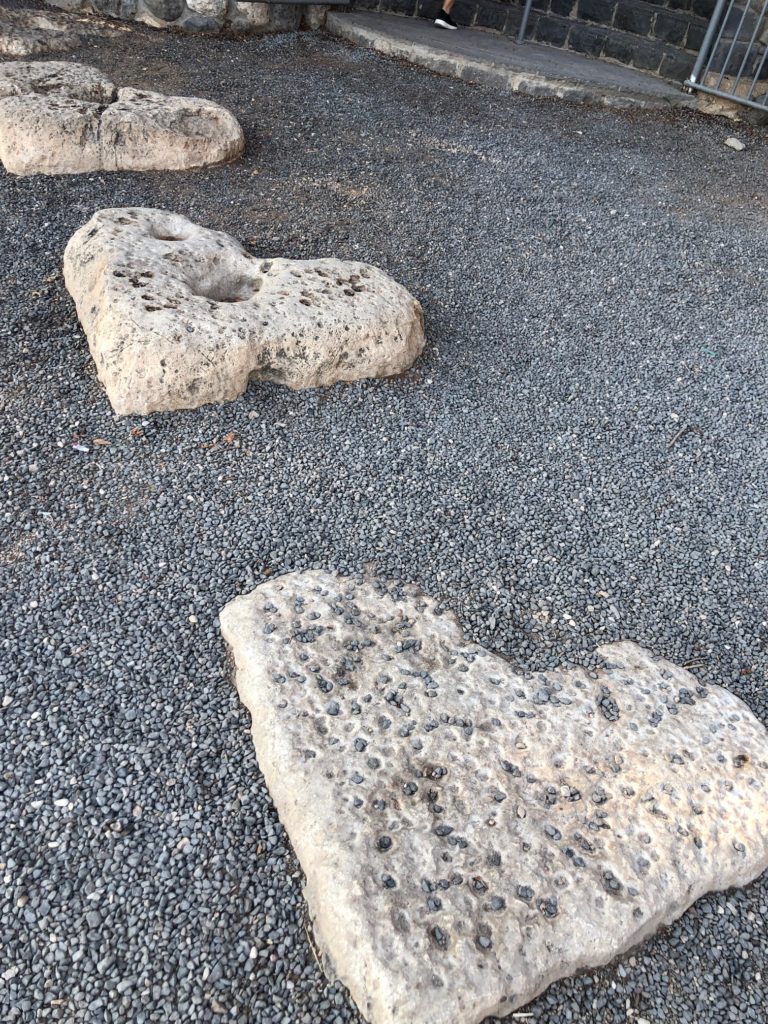
4:15pm: Capernaum; tradition believes this to be the home of Peter. Many miracles were gifted at this holy place. This site signifies the beginning of Jesus ministry, one of his first sermons that he gave. The center of this area has 3 churches buildt over the remaining relics of Peter’s Mother In-Laws home.
5:15pm: Magdala; believed to be the birthplace and home of Mary Magdalene. Its excavations reveal a vibrant first century city and its art honors women of the Bible and faithful women even now.
Many Blessings,
Tim and Lisa Otterbacher


